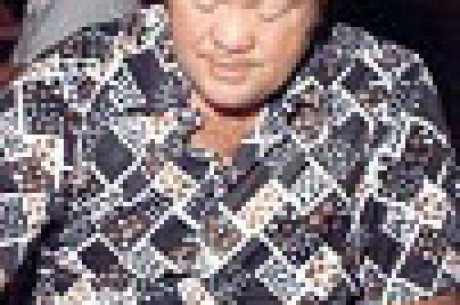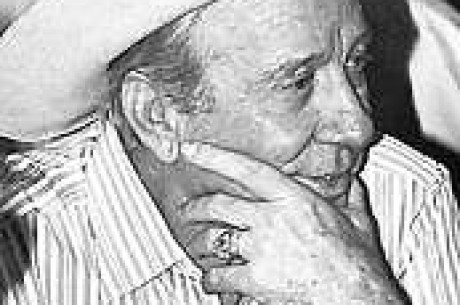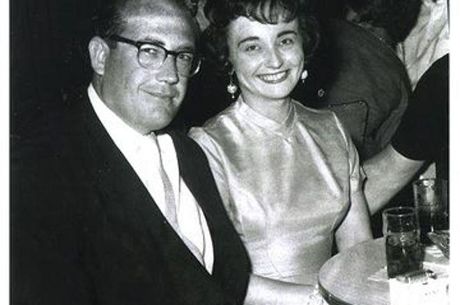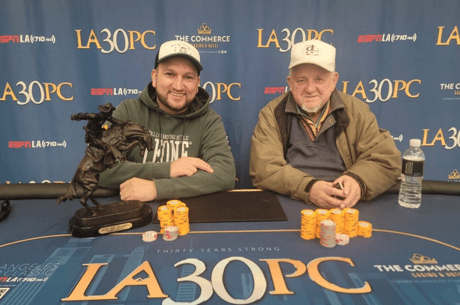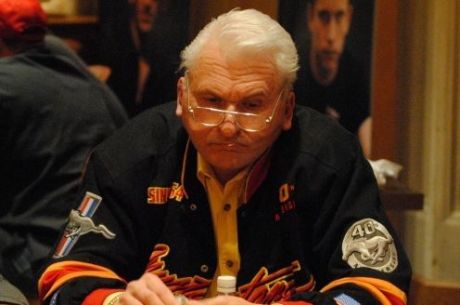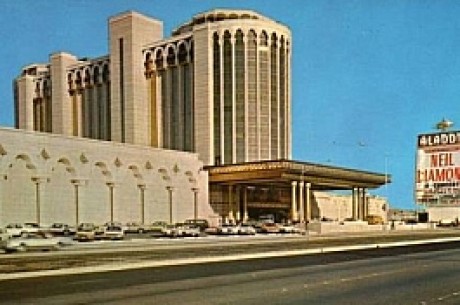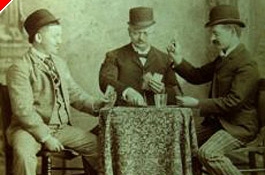Legends of the game: Ken Uston (1935-1987)
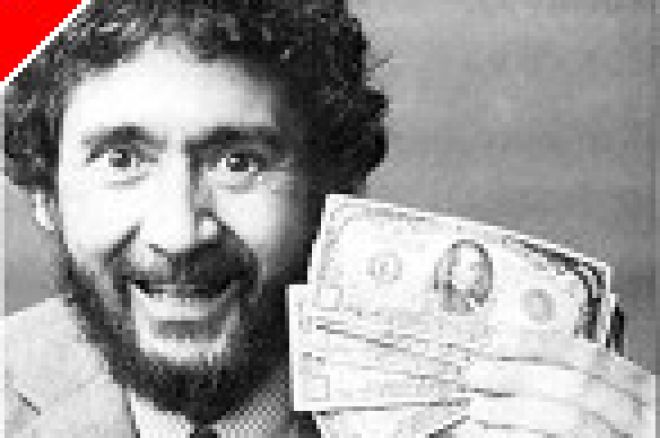
Ken Uston was born in 1935, and brought up in a typically middle-class neighborhood in New York. He attended Yale on scholarship at sixteen, and went on to Harvard Business School, majoring in finance. As Kenny put it, "I wanted to major in music, but my dad said, 'Kenny, there's only one Sammy Kaye,' meaning the competition was too tough."
He was a tireless worker, and found joy in every job he held from his days as Director of Operations Research at the Southern New England Telephone Company, to the Pacific Stock Exchange. He learned different computer languages, programming, and loved meshing his new knowledge with his skills from Harvard and Yale. He was well paid, and doing great in the business world.
As Senior Vice President of the Pacific Stock Exchange, Ken's Executive Assistant was my Aunt Val. Just a little coincidence that turned my life around, but not his. Ken called a dinner party conversation a "Defining moment in my bachelor life." He enjoyed a salary of about $50,000 a year in 1974, and had a penthouse apartment in San Francisco that overlooked the Bay, but it was a conversation with a young lady at a simple dinner party that changed Ken's life.
At the party, Joan told him about a friend of hers (who Ken gave the pseudonym Al Francesco) who played blackjack on a full-time basis, and because Ken had tried Thorp's point count system in nearby Lake Tahoe, Nevada, he was anxious to hear more. Later in the week, Al Francesco called and asked if he wanted to learn more about their team of players. "You bet," was Ken's only reply.
Over the weekend, in a nearby town, Ken met several of the team's members, and learned the basics of their system of play. It involved stationing a number of members on blackjack tables around the casino who would "count down" the decks of cards. When a shoe contained four decks, a "counter" would begin using a mathematical system to track the positive or negative condition of the shoe (beginning with the Revere system, but then changing a few months later to Lance Humble's Hi Opt I). With a counting system, the counter knows when the odds are in the player's favor. The counter makes the minimum bet each hand at the table, and signals the "big player" only positive counts (good for the player). The big player comes in with a very large bet and plays until the count becomes unfavorable or the decks need to be shuffled. At this point the big player looks around the casino, hoping there is another team member with a hot shoe.
The system, still used today, is very effective. The simplicity of making large bets only when the player has a 1.5 to 2.5 percent edge over the house sounds easy enough, and it fooled the pit bosses all over Nevada for several years. The bosses kept whispering together, and Ken could guess what they were saying, "Wow, this guy is going to be a gold mine for us." Oops.
Blackjack rules were more liberal in the 1970's, and the bosses less knowledgeable about card counters. Ken remembered his first trip to Las Vegas (after being promoted to one of the team's big players), as an attack on the Fremont Casino. He signaled the counter to leave the table and spread to seven hands of $500. Forty-five minutes later he cashed out $27,600 in winnings. The team would eventually win over $500,000 in Las Vegas, and even more in Europe.
Ken quit his job at the exchange, and the team played on, pounding several casinos in Las Vegas. Just when it all seemed too easy, Ken ran into trouble at the Sands, a casino they had beaten for almost $200,000. Ken was met at the cage by the casino's shift boss, and read the casino's "Trespass Act." He was told to leave the premises or be arrested. It was his first blackjack bust, and he was also barred at the other casinos owned by the Hughes Corporation, including the Frontier, Landmark, Desert Inn, Castaways and the Silver Slipper.
Upon returning to San Francisco, Ken hired a lawyer, and soon the San Francisco Chronicle ran a front-page story entitled, "Man Who Beat Vegas Sues for $24 Million." The lawsuits never amounted to much, but they did chew up much of Ken's bankroll.
On subsequent trips to Nevada, Ken was more careful. He grew a beard, let his hair grow long, and used fake ID's while playing under different names. A new team was formed, and the money began to flow again. Ken moved to the Jockey Club in Las Vegas, and orchestrated his team's activities. Then, in January of 1977, he got another interesting phone call.
The gentleman who phoned said that he had made a computer that played perfect blackjack, "if you tell it what cards have been played." The small computer, which they dubbed, "George," was the size of a pack of cigarettes, and it processed the information through four buttons, using binary code. The output device, which was initially put into an empty rouge case, transmitted a short or long vibration, telling the player the exact play for each hand.
The system was not without problems, like the time the battery pack overheated and burned one of the counters, or the time the CPU was lost in a casino, but overall the team could see the amazing power the computer offered.
A trip to Lake Tahoe provided some much needed winnings, while the players wore "magic shoes," with a tapper along the insole. Unfortunately, due to overstaying their welcome at Harrah's, several team members were arrested and the CPU confiscated. Ken was not one of them, so he bailed them all out of the Zephyr Cove jail and they scattered in the wind.
Ken was back in Vegas in 1978 when David Harman, the host of Good Morning America called him. Harman wanted to do a piece on gambling, and hoped Ken would appear on the show, perhaps even play some blackjack at a casino and be taped. Ken had just co-authored his first book, The Big Player, and the idea interested him. The only problem was that no casino wanted to let Ken play.
Like many times before and after, the Horseshoe Casino accepted a real gamble. Jack Binion set the rules: a bet variation from $400 to $1,000 and only sixteen cards or so dealt from a single deck. It wasn't much, but Benny Binion finally agreed to let Ken play either one, or two hands, at his discretion. It was enough.
Over a five-hour period, Ken managed to win $10,400 and the crew had enough to produce a nice TV show. David Harman asked Benny Binion, "Is Ken Uston a cheater?"
To which Benny replied, "Hell, no. It's a science. He used his brain, he deserves his win." If only more casinos felt that way about card counters!
In 1979, Ken was in the middle of the effort to keep Atlantic City from allowing their new casino, "Resorts International", to bar blackjack players. He once again footed the bill for the legal defense. Other players and authors, like Stanley Roberts (who published Ken's book, Million Dollar Blackjack in 1981) pleaded the case in the media. Eventually, after taking the case all the way to the New Jersey Supreme Court, the casinos were forced to allow all players the opportunity to play.
About this time I was playing basketball in college and towing cars to make ends meet. I picked up a fellow and his girlfriend (and their car) in Pleasant Hill, California and we got on the subject of poker. I fancied myself a decent player, and accepted their invitation to a game during the weekend. As things turned out, they spent a good deal of time playing blackjack, and eventually it was ascertained that I had once met Ken Uston through my aunt, and they were a part of his blackjack team.
I was lucky enough to eventually play on one of the teams, and while I was always just a "counter," it was a tremendous experience. I didn't get backrubs while eating free meals at Caesar's most prestigious restaurant like Ken did, but I did get comped at the Landmark, and for a young kid, that was great.
We would play to a bank of say $25,000 (Ken was heavily invested in real estate at this time) and when we broke the bank (doubled our money), we would have a little party. All the cash and chips were thrown on a bed and everybody would put in slips showing their expenses. After the expenses were deducted, 50% of the win went to the money backers, and the rest went to the players, based on how many hours they put in. Yeah, the big players got more, but how can I complain about a $1500 payday? It beat the hell out of towing cars for $5 an hour.
Ken Uston produced a terrific blackjack training system for home computers in 1983 that was years ahead of its time, and then took a million dollar job in Europe, programming computers. He died, sadly, in September of 1987, at the age of 52. Before that untimely death however, much like Amarillo Slim did with poker, Ken brought the skillful play of blackjack to the masses, and legitimized the game in the eyes of people that had earlier refused to believe it could be beaten. Also much like today's poker players, Ken refused to see blackjack as gambling. He always said he was just a businessman, and it's true. He was a very good, businessman.
Please visit our online poker room directory to see the best bonuses on the web!

